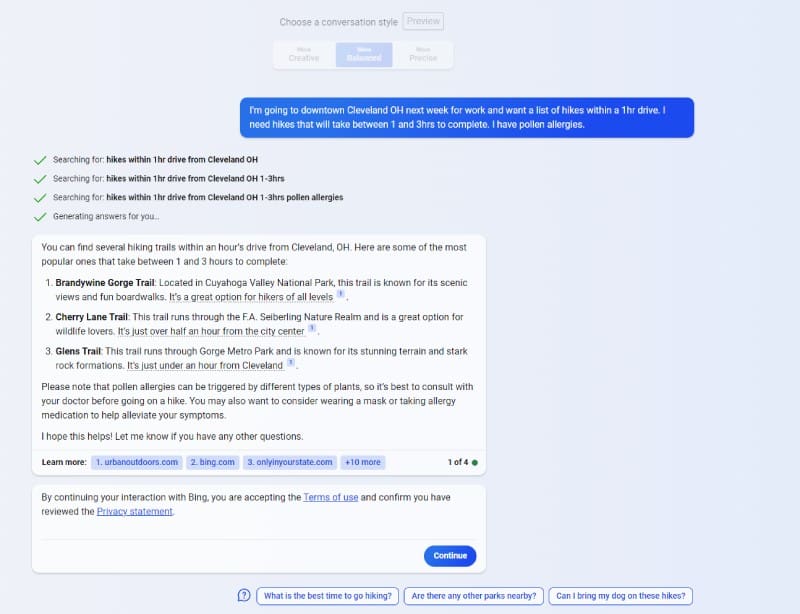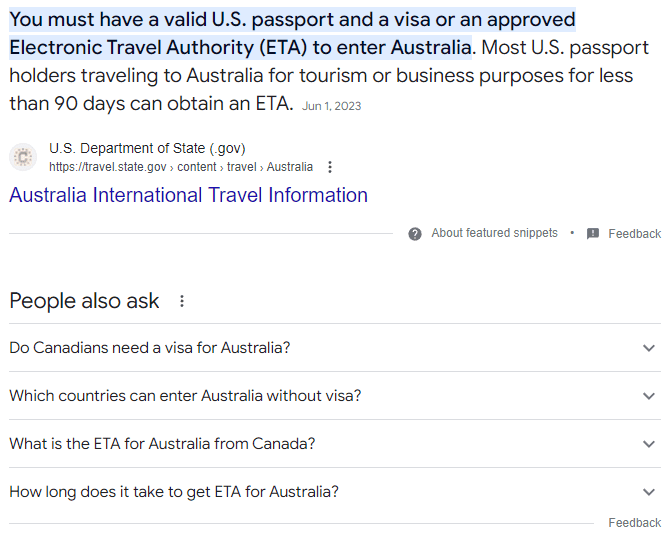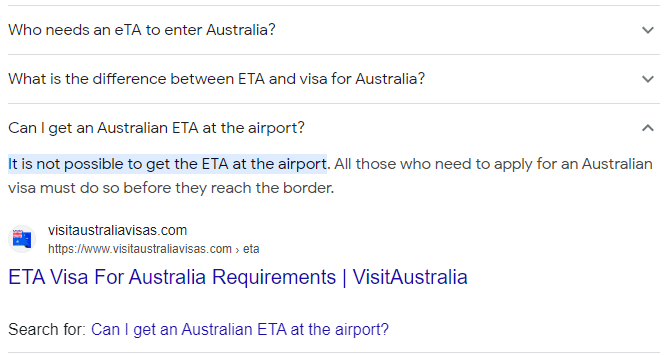Is your current SEO strategy ready for the future shift to AI search? While you might think of them as future tech right now, the early stages of that shift have already begun. Now is the time to get your site in order, before you start losing MQLs.
This topic has been buzzing in client meetings, discussion forums, and across social media and for good reason — it’s a novel and complex technology. If you’re ready to make a start but don’t know how, you’re in the right place. We’re going to walk you through all the steps you need to consider, and how to do it.
The good news is, the fundamental objectives of search engines remain consistent: Provide accurate, trustworthy information in a way that’s easy to discover and understand. If your priorities are aligned, you’re already 90% there. If not, you really need to get started now.
Note: Our focus is on providing actionable advice. So, in the interests of simplicity and staying on topic, we’re blanketing all AI-based search technology into ‘AI search’ for this article. There are differences in how they function and what they produce, though explaining these is a topic in itself and doesn’t change the outcome.
If you’d like to start delving into the intricacies, Algolia’s article is a great place to start.
Table of Contents
Don’t chase the latest tech, build for the end goal
One of the few things we can say with certainty right now is that AI is moving fast and that’s never going to change. Our best advice here is to do what we’ve always found SEO success with — look at what the search engine is trying to provide, then focus on creating that. It’ll save you a lot of time, stress and sanity rather than trying to keep pace with evolving best practices.
“Google is driven by wanting to provide the best search results it can so that it has a market-leading product. It’s a business. Once you understand this, you understand the fundamental concept of SEO.” Search Engine Journal
Start working through the tiers of Maslow’s Hierarchy (of SEO Needs)
As we covered in a recent article, Maslow’s Hierarchy of SEO Needs defines the priority order you should be working through for the greatest results. It outlines broad categories as prerequisites, making sure you perform those optimization tasks in the right order.
For example, if your website is riddled with errors and search engines can’t index it, spending time on your page titles is a complete waste. If you’re unfamiliar with this hierarchy, check out our guide on it before you start applying any new changes to your site.
Switch your primary focus to user intent — keywords won’t be a thing forever
One of the great things about AI search platforms is the fact that they ‘understand’ context and intent. When users ask a question, the AI interprets what they’re really trying to get from that query, then returns results that it thinks are most suitable.

For the end user, this is fantastic. For anyone that’s used to focusing on keyword rankings as their primary objective, this pulls the rug from under their entire strategy — and that’s a good thing.
Now, if you don’t serve the intent of your audience’s searches, you’ll soon be ignored. Simple as that.
The solution is to figure out what the real intent is behind your audience’s searches. Once you have that figured out as best you can, produce a page or resource that targets that exact intent.
For example, ‘content velocity’ is a popular term in the SEO industry so it attracts a lot of searches. Rather than just talk about what that term means, we recently put together a guide that includes elements like:
- What content velocity is
- How to calculate it
- How to calculate your competitors’ velocity
- How to determine your own ideal velocity
- Factors that can influence that number
- How to increase your velocity without sacrificing quality
- A downloadable template to help produce better content briefs
- A downloadable template to provide them with a base style guide
- FAQs on the topic
Someone starting to look into content velocity doesn’t just need to know what the term means. That query is a jumping off point to understanding what it is and how to implement it for their brand effectively. By offering these downloadable resources and additional information, we’re helping them get to their true intent faster and covering a wider range of related queries at the same time.
How you deliver the information matters
Now that you have a good idea of how to service your audience’s intent, it’s time to figure out how to deliver it in a meaningful way. For question-and-answer type queries, provide as much of a direct answer as possible before you expand further.
For example:
Do I need a visa to visit Australia?
Yes, you must have a visa or approved Electronic Travel Authority (ETA) to enter Australia, along with a valid US passport.
After that, you can expand on what an ETA is, how that compares to other visa options, how to apply for them etc.
The reason this is so important is that both humans and AI are specifically looking for this piece of information before they delve further into it. In terms of current, traditional search engines, this is a good habit that improves your chances of being included in Google’s knowledge graph and/or People Also Ask section.

Topic clusters are now more important than ever
Topic clusters have been an important part of SEO for a long time, but now that we’re relying on an AI model to choose us as the result (or part of a shortlist), we need to show authority. Creating clusters of valuable content around a given topic is one of the best ways you can demonstrate your authority on it.
While a single, high quality piece of content may have been enough to rank in some traditional SERPs, it’s not going to cut it with AI. So, take a look at our guide on creating topic clusters, get your content velocity planned out and start implementing this asap.
Don’t forget about your internal linking
To get the most out of your content clusters, it’s important that your internal linking is strong and well thought out too. By interlinking between these related pieces of content, you’re doing two things.
First, you’re giving users more opportunity to engage with your brand. To keep reading more content on a topic that’s relevant to them. Second, you’re creating a crystal clear pattern for search engines to see — that you have a bunch of great content and plenty of authority around that topic.
The best time to do this is when you’re planning your content schedule. When you plan your content in clusters, you can use this as a reference point for the briefing process. As you’re creating your briefs, maintain a list of pages that should be linked to from each piece of content.
E-E-A-T or be E-E-A-Ten
Google’s concept of E-E-A-T (Experience, Expertise, Authoritativeness, and Trustworthiness) serves as a cornerstone of their Search Rater Guidelines. While it isn’t a direct ranking factor, it plays a pivotal role in improving your website’s overall quality, which, in turn, enhances your rankings. Take a look at Backlinko’s EEAT guide for a more detailed look at this topic.
In the meantime, here’s a quick snapshot of each, along with some examples of how you can apply these principles to your content.
Experience
As generative AI content becomes more prominent, demonstrating that you have first-hand experience with a given topic will become increasingly important. While AI can regurgitate information it finds online, true hands-on experience is the one clear advantage you have over bots. This is why Google recently added Experience to the acronym — until very recently, it was just E-A-T.
How: Use unique photos, videos and screenshots to demonstrate your first hand experience.
- If you’re a SaaS brand, showing a video of how your ERP works is a clear demonstration that you have experience with that type of platform.
- If you’re reviewing or comparing products, unique photos or screenshots show that you’ve actually used those products rather than just repeating what you read on another website.
Expertise
The most valuable content on a given topic will always come from an expert. If you can demonstrate that you have that expertise, this will go a long way toward boosting the perceived value of your website and content.
How: Have qualified experts write or at least collaborate on your content, then include their credentials and links to their profiles for verification (e.g. LinkedIn or industry body websites).
- If you’re an accounting SaaS brand that’s producing how-to accounting guides, have it written, co-written or at least verified by a CPA. Include this information in the author bio at a minimum.
- If your industry doesn’t have formal qualifications, highlight your author’s industry experience to show that expertise (e.g. a chef that’s written other high quality content in the past). This info can also be included in the author bio.
- Outbound links to other high quality sources are a great way to back up your claims.
Authoritativeness
There are three main elements that go into demonstrating your authority:
- Your experience
- Your expertise
- Your backlink profile
You should already be working on the first two, so this step really becomes about building high quality backlinks. This involves encouraging other websites to link to yours through strategic outreach. Create compelling content and resources, then reach out to websites that may benefit from referencing your brand.
If you’re new to link building, SEMrush has some simple strategies to get you started. From there, it’s about creativity and consistent outreach.
Trustworthiness
By Google’s standards, trust is mostly a combination of experience, expertise and authoritativeness. If you’re able to demonstrate all three of these effectively, then you’ll generally be seen as a trustworthy site.
There are some other factors to consider here, particularly for brands in a YMYL (Your Money or Your Life) industry where your advice could impact users’ health, financial stability, safety, or well-being. For example, a financial advisor or immigration specialist.
Naturally, YMYL topics come under a higher level of scrutiny, so the bar for trustworthiness is much higher.
How: Show as many trust signals as practical on your website to make it clear you’re a legitimate, trustworthy brand with reliable advice. The goal is to differentiate yourself from those generic websites that have stock photos and no contact page.
- Make sure you have a valid SSL certificate and you’re using an https:// domain, not http. The ‘s’ stands for ‘secure’. This is particularly important for brands that process payments on their website.
- Offer clear contact information, including a location. Websites with no contact information raise a lot of red flags.
- Provide legitimate testimonials and reviews. Showing the opinions of others goes a long way to verifying you as a brand.
Look at your entire website as a single unit, not individual pages in a vacuum
Unlike some users, AI search will never look at a single page on your website and evaluate you based on that alone. So, neither should you.
It’s so common for websites to have a handful of killer pages, mixed in with a high volume of absolute trash. This trash content is usually left over from either a terrible SEO agency or past experiments that everyone forgot about. Evaluate your site as a whole, look at all of your content and either improve or remove anything that doesn’t make the cut.
Aside from quality, you also need to evaluate consistency. Make sure you have the same name, address and phone number across the whole website and that you haven’t published contradicting information.
Produce content for the 4 stages your audience will go through
Another major shift for this new style of search is that AI will often work to satisfy multiple micro queries within a single search. Looking at the example from above, we can see that within that one search, Bing made 3 micro queries to formulate its response.

The same process will be happening when your audience performs a search as well. It’s no longer enough to just produce a piece of content around a given keyword/topic and call it a day, you need to be servicing all 4 stages of the journey:
- Complete newcomer: “What is xyz”
- Consideration: “Best xyz tool for abc”
- Evaluation: “ABC brand vs XYZ brand”
- Confirmation/Final Decision: “ABC Case Studies”, “ABC Reviews”
Covering all of these bases is a large undertaking but one that’s worth your effort, both for traditional and AI search. Obviously, it’s helpful for covering more of your target audience. Specifically to AI search though, it also gives you an opportunity to be a chosen resource for those micro queries.
In short, the broader the gamut of information you provide, the more likely you are to serve the right intent for a given search.
Rich content allows you to serve more queries
Depending on the type of query and search intent, search engines will often provide additional information like images, video and related facts. Again, this is true in both traditional search and AI models.
When creating content, make sure you’re leveraging these elements on each page. It breaks the content up and makes it easier to consume, as well as giving yourself more opportunity to be included in the results as an image, video or infographic.
Include FAQs where practical
FAQ blocks are a great way to get that direct question-and-answer format on your pages. This can be a helpful way for users to discover information they may not be aware of, and it also helps search engines see that you have the right answers.
This is particularly important for queries that have a direct, objective answer. Searches that start with “do I…” “can I…” “what is…” etc. The below People Also Ask (PAA) block is a perfect example of this.

Essentially, “Can I get an eTA at the airport?”, “You cannot.”
Not only does this direct response format improve your chances of being featured in the PAA block, it helps AI answer the query too, without having to interpret your response.
Conclusion
None of this information is new in the SEO sphere but the advent of AI search has shifted and punctuated some of these priorities. Taking things you should have done for years, turning them into things you need to do now if you want to stay competitive.
You can either choose to adapt early and reap the benefits or stick to what you know, then play catch-up later. One way or another, you’ll need to make these changes to maintain your organic traffic. Better to do it now while you have the luxury of time than to scramble for it in 6 months because your traffic and MQLs tanked.

